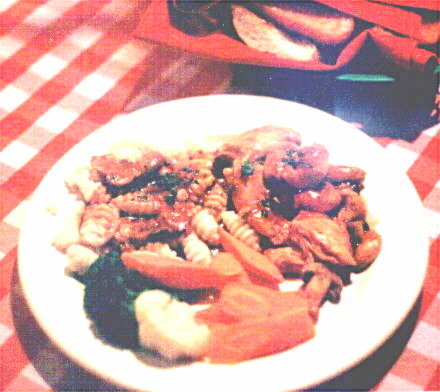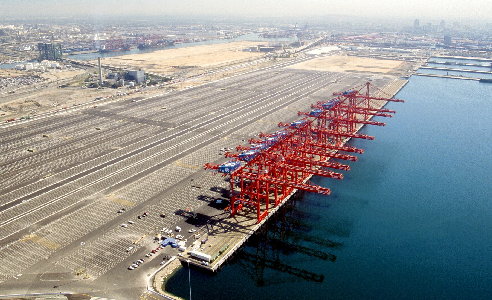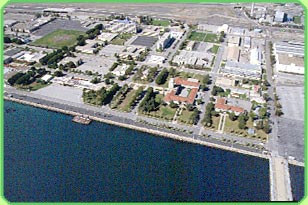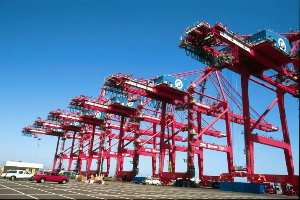See Pictures of What City of LB Did With Former LB Naval Stn. & Historic Roosevelt Base:
(August 19, 2002) -- The former LB Naval Station and historic Roosevelt base, whose acquisition and demolition by the Port with Council approval for a container terminal (originally planned for the China Ocean Shipping Company) ignited one of the biggest controversies in the history of the City of LB, has now become Pier T, LB's first "mega-terminal" whose first phase construction has been declared officially completed by the Port of LB. COSCO isn't there, but the container yard is. We post verbatim below the text of a Port of LB press release. The full history of how Pier T came about is beyond the scope of this article. However, we believe its salient points are worth recalling. After a Base Realignment Commission voted to close the Naval Station, City Hall moved quickly to get the property from the Navy and justify its use for Port interests. A City Hall selected commission, charged with assessing the best proposed reuse of the property, focused on economic returns of proposed reuses, a process framed in terms that inevitably steered the result toward a Port of LB proposal to give the property to the Port for exclusive Port use. The Port claimed large economic benefits from its proposed reuse. Numerous hearings and public meetings were held and public input taken, but City Hall kept details of the Roosevelt Base on the Naval Station property fairly well hidden. The Roosevelt Base had a campus like facility which qualified for inclusion on the National Register of Historic Places, included well manicured greenery surrounding elegant buildings (some designed by renowned African-American architect Paul R. Williams), amenities and recreational facilities including a gymnasium and swimming pool and high rise housing, all built with U.S. taxpayer dollars. Without serious discussion of how these facilities might be retained for use by LB residents, the City Council voted to approve exclusive Port use of the property once the Navy gave it to the City. The Port then proceeded to make plans to turn the property into a container facility, eyeing a new terminal for COSCO, the China Ocean Shipping Co. This might have remained largely out of public view had it not been for an article by Mr. Hillburg's article caught the attention of Huell Howser, host of KCET-TV's "California's Gold." Howser brought a TV crew to the Roosevelt base and took a walking tour with Mr. Hillburg. His tour ended with an uneasy colloquy between Mr. Howser and a Port spokesperson. When Howser's program aired on KCET, the effect was like cold water hitting a hot pan. |







